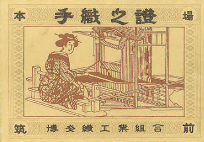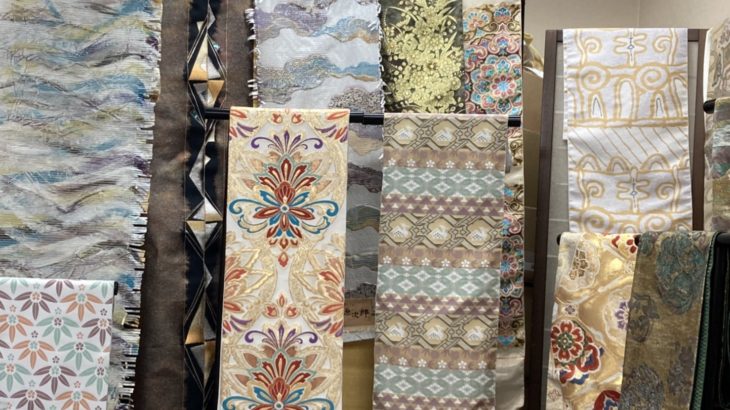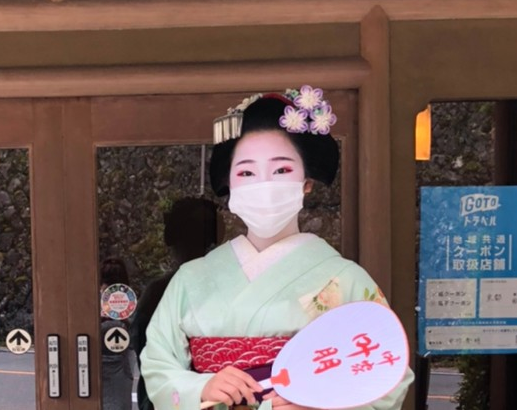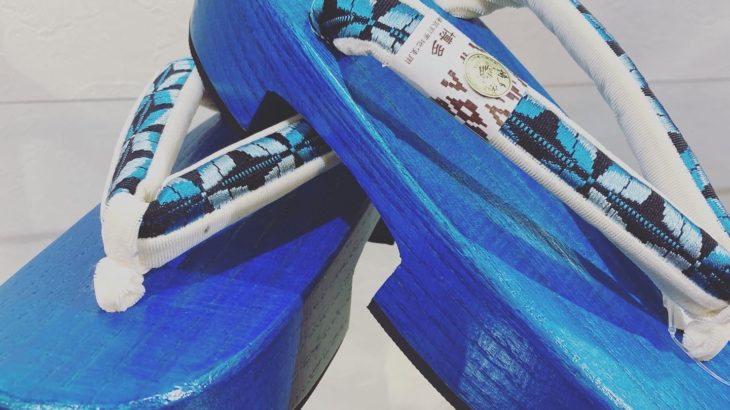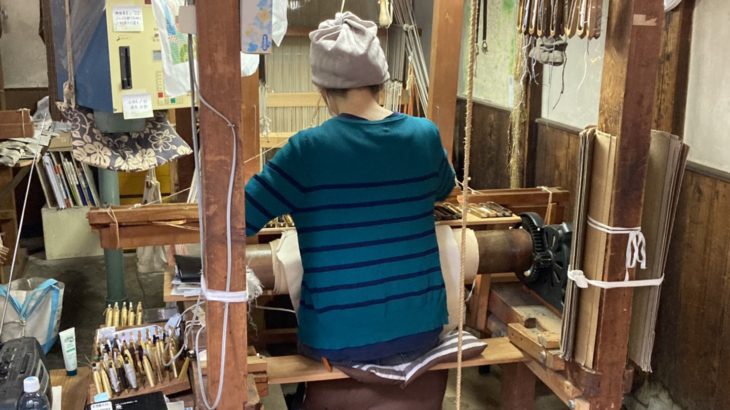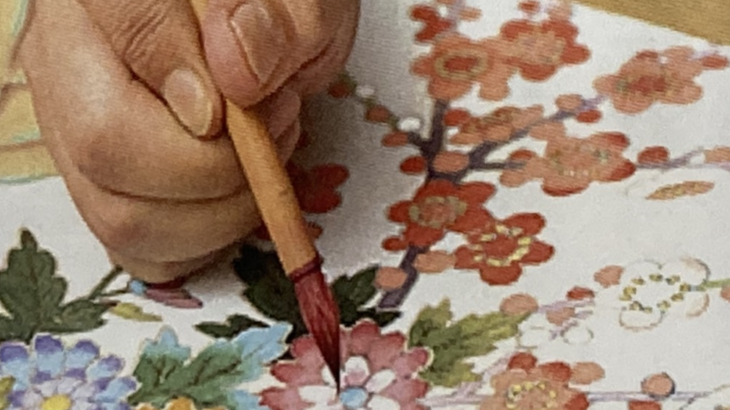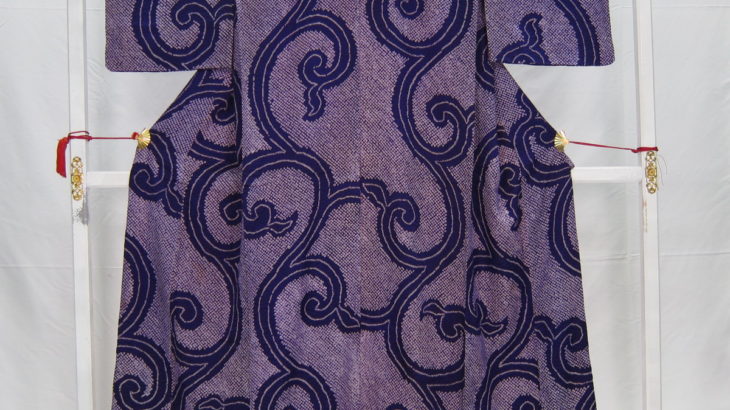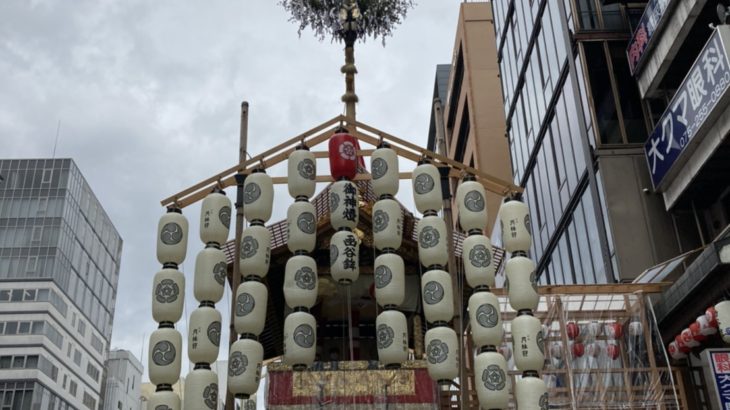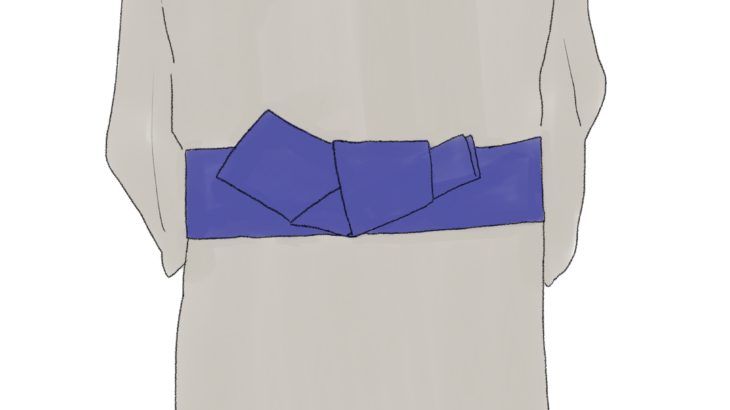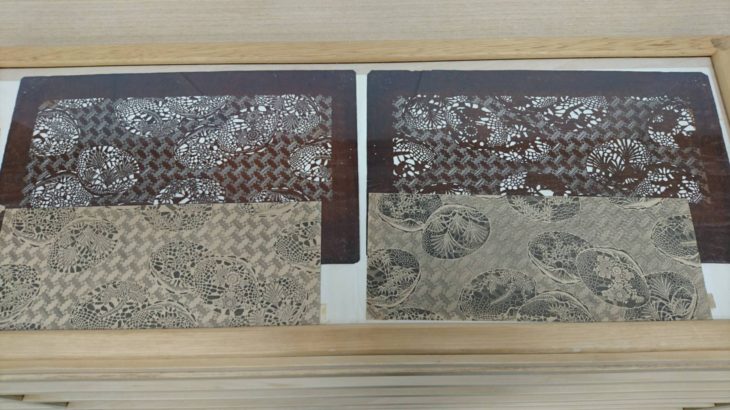Hello, this is Shinji from warashibe-choja.jp. This time, I’d like to talk about Hakata-ori, the fabric of Fukuoka Prefecture, my birthplace. Many kimono fans have at least one piece of Hakata-ori because it is easy to tie and does not fall apart easily. This time, I would like to talk about Hakata Obi, which is loved by both beginners and experts of kimono. History of Hakata-ori In 1235, during the Kamakura period (1185-1333), Mitsuta Yasouemon traveled to Song Dynasty (960-1279) in China to learn Danshi weaving and invented floating weaves such as “Tokko” and “Hana-zara” with designs of Buddhist altars. Kenjyo-Hakata-ori After the Battle of Sekigahara, Hakata-ori entered a new era under the Kuroda Clan and became known throughout Japan. Hakata-ori was chosen as a gift for the Edo shogunate. The pattern chosen was the “Tokko-hana-zara” pattern, the origin of Hakata-ori. In addition, Ichikawa Danjuro VII, a popular Kabuki actor at the time, wore Hakata-ori in his performance of Sukeroku Yukari no Edo Zakura (The Cherry Tree of Sukeroku), which led to the spread of Hakata-ori throughout Japan. Goshiki-kenjyo I often find people who say, “Hakata-ori has many similar colors, doesn’t it? In fact, Hakataori has colors that represent the […]
Hello, this is Shinji from Warashibe-choja.jp. Before COVID-19, I saw many tourists in kimono in Kyoto, but now there are fewer and fewer. I used to see people wearing furisode and hanhaba-obi. However, there is actually a reason why people wear hukuro-obi when they are involved in kimono.Depending on the material of the obi and the shape of the obi, there is a certain prestige to the obi as well as the kimono. In this article, I would like to introduce the different types of obi. 1,Type of Obi There are various types and materials of obi, and the grade of the obi varies depending on its shape and material. In this article, I would like to talk about some of the most common types. It is said that the obi was first created in the Muromachi period (1336-1573), and until then, the kimono was held in place with strings. When Ashikaga Yoshimasa was the shogun, the obi was called hiraguke obi, which is about 8cm wide and 3m long. The hiraguke obi is now used as an obi to be tied to the hanten at festivals. ① Hukuro-obi As the name suggests, a sack obi is an obi that […]
Hello, this is Shinji from Warashibe-choja.jp. It’s still hot, but the other day I went to Kawadoko in Kyoto. Kawadoko is a place where you can sit on the river and eat while cooling off on the floor. This time, I had a meal there and watched the maiko dance. I would be happy if you could watch the video of the maiko dancing later on, as I have uploaded the URL. Today, I would like to talk about maiko in Kyoto, which you should all try to meet at least once. About Maiko in Kyoto A maiko is a woman who adds entertainment to banquets by singing, dancing, and playing the shamisen (three-stringed instrument) in the flower districts called Gokagai in Kyoto (Kamishichiken, Gion Kobu, Gion Higashi, Pontocho, and Miyagawa-cho), and is in the apprentice training stage of a geiko. The age limit for maiko is up to 20 years old, and maiko are trained at the Okiya (a place like a training school for geiko) from the age of 15, and finish their training at the age of 20 to become geiko. Characteristics of Maiko Nihon-gami ( =Japanese coiffure ) A maiko’s nihon-gami is her natural hair. When […]
Hello, this is Shinji from Warashibe-choja.jp. This time, I will talk about how to store Zori and bags.Generally, it is common to all footwear, but please do not put it in a box immediately after going out. Zori has low humidity. If the back of the Zori is wet, it may cause mold or the bottom to come off. Let’s keep it dry enough. How to care Zori with tatami mats on the surface For Zori and Geta (= Japanese clogs) whose surface is made of tatami mats, wipe the surface of the tatami mats and dry them. Zori with a leather surface Zori sandals with a leather surface should be wiped well with a soft, dry cloth. Zori and bags made of enamel leather on the surface Wipe well with a soft, slightly moistened cloth. It is recommended that you occasionally clean your shoes with cream.Leather products such as enamel can be cleaned with benzine, but never use thinner, solvent-containing shoes or leather cream. It may scratch the surface of the enamel. Zori and bags made of Saga Nishiki For fabric products such as Saga Nishiki (= Japanese textiles using gold and silver threads), use a soft brush to […]
Hello, this is Shinji from Warashibe-choja.jp. The other day, I went to Nishijin in Kyoto. The aging of craftsmen is advancing, and the number of craftsmen closing their workshops is increasing. I had a meeting with the intention of thinking about something new. Even after I was 70 years old, I was able to talk about a very interesting story with a positive craftsman, so I will summarize it in an article at a later date. This time, I would like to briefly explain about Nishijin-ori. History of Nishijin-ori During the Muromachi period, the Onin War (1467-1477), which was a battle that divided Japan into two, ended, and the textile craftsmen who had been scattered around the country returned to Kyoto. Weaving will be resumed around the place where the position of the Western Army led by Yamana Sozen was placed during the war. It is said that it was around this time that the northwestern part of Kyoto, which had prospered as a textile town before the war, came to be called “Nishijin”. In 2022, it will be called Nishijin and it will be the 555th anniversary. It is said that the court has been making textiles in this […]
Hello, this is Shinji from Warashibe-choja.jp. This time, I would like to talk about the world of Kaga Yuzen in Ishikawa Prefecture. It will be the story of Kaga, which is famous for Keiji Maeda, so if you are interested, please read it to the end. The beginning of Yuzen-zome (=Yuzen dyeing) The name [Yuzen-zome] comes from Miyazaki Yuzensai, a Japanese fan painter who was active in Kyoto. Yuzensai is known to have lived in front of Chion-in in Kyoto and spent his later years in Kanazawa, dying in 1736 at the age of 83, but his birth is unknown. It is said that there is no doubt that Kaga Yuzen was established by Yuzensai, who was a popular Japanese fan painter at the time, who worked on the coloring of costumes. Features of Kaga Yuzen Miyazaki Yuzensai laid the foundations for both Kyo Yuzen and Kaga Yuzen, but each characteristic was born with the times. Kaga Yuzen is a painting-like pattern centered on a calm and realistic flower pattern, while Kyo Yuzen is characterized by a flowing collective arrangement pattern. It is believed that this is due to the support of the samurai culture of Kaga and the public […]
Hello, this is Shinji from Warashibe-choja.jp. This time, I would like to talk about reused kimono for beginners in kimono. On some sites, kimonos from 1945 to 1955 are called antique kimonos, and kimonos on the market after 1955 are classified as recycled kimonos. Around this time, it was customary in Japan to have a kimono as a wedding tool. Kimonos made around that time are now on the market as reused kimonos. About reused kimono In recent years, the number of reused kimono shops has increased in Japan as well. However, kimonos from the Edo period to the early Showa period were generally reused kimonos, and it seems that they rarely tailored kimonos. Since 1955, when Western clothing came in from overseas, the number of used clothing stores for such kimonos has decreased, and now it is changing to the form handled by antique dealers.Compared to modern people, old Japanese people are shorter in height and hand length, so small kimonos stand out. It is possible to change the dimensions by changing the tailoring, which is an advantage of kimono, but many kimonos of this era have a short width and cannot be long enough. Antique kimono and recycled […]
Hello, this is Shinji from Warashibe-choja.jp. On July 16th, I went to Kyoto to hear the story of a potter’s teacher. The day before Yamaboko-jyunko is called “yoi-yama” in Gion matsuri. Every year, many people can’t walk, but due to the influence of COVID-19, there were few people and I could take pictures. This time, there are three major festivals in Japan, “Kanda Matsuri” in Tokyo, “Tenjin Matsuri” in Osaka, and “Gion Matsuri” in Kyoto. I would like to talk about one of them, “Gion Matsuri”. Matsuri = festival? Speaking of Matsuri, it is translated as Festival in English. Speaking of Festival, I feel a gorgeous image. There are many festivals in Japan to celebrate a good harvest, but “Gion matsuri” was originally born in 869 as a matsuri that gathers and worships evil spirits by setting up 66 Hoko (= halberds) in order to calm the plague during the Heian period. Gion Matsuri is not a gorgeous festival. It is a matsuri where you can hear a little lonely music called Gion-bayashi. When is Gion Matsuri? Gion matsuri will be a one-month matsuri from Kippuiri on July 1st to Ekijinjya-nagoshisai on July 31st. It is said that you can […]
Hello, this is Shinji from “Warashibe-choja.jp”. Today, I would like to talk about how to tie an obi for men’s kimono, which is often asked by acquaintances. Many people say, “I can wear a kimono somehow, but I can’t tie an obi.” I would like to introduce using illustrations. In addition, we will be uploading videos in the future, so please refer to that as well. For those who can’t remember it no matter how many times they try, we will also introduce a special obi. What you need to wear a men’s kimono 1, Tabi (= socks for kimono) First of all, let’s wear Tabi. If you wear it after wearing a kimono, it may cause you to worn out of shape for kimono, so please be careful. 2, Hada-gi (= underwear) As with women, men will be dressed in the order of Hada-gi → Naga-jyuban → Kimono. The lower half of the body can be handled with Steteco. 3, Naga-jyuban Put your arm through the sleeve of Naga-jyuban and pull both Eri-saki in front of you to align the center of your back. Pull the right Eri-saki slightly upward to the left side to fit it to your skin. […]
Hello, this is Shinji from “Warashibe-choja.jp”. This time, I would like to talk about Edo-Komon. Edo-komon is one of the most convenient items in kimono. From casual wear to formal wear, it is a kimono that is often used by coordinating the obi. It is difficult to explain how to match the obi in sentences, so I will explain it later. History of Edo-komon When you hear the history of Edo-komon, you might think “Isn’t it the Edo period?”, But its roots are said to be the Muromachi period. At that time, it was used for armor, Kamon (= family crest), etc., but it is said that it became dyed for clothes such as everyday clothes in the latter half of the Muromachi period. It was not until the Edo period that it was technologically developed and popularized.In the early Edo period, it spread by dyeing it in a samurai dress, and in the middle of the Edo period, it became loved by the general public beyond its status and continues to the present day. It has been handed down to the present day with the sense and technique refined by a long tradition. Production of Edo-komon 1, Creation of Kata-gami […]
